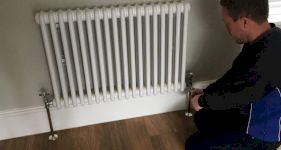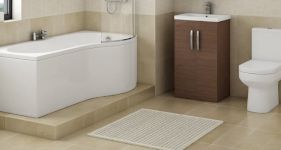Toilet Repair Guide
Toilets are sometimes awkward to find out what the problem is as most toilets come in two separate parts. In a toilet, the upper tank retains the water that is expelled each time you flush the toilet, while the lower bowl sits on the floor.
There are no moving parts in the bowl, which is just a solid piece of porcelain drain fixture. There aren't many repairs that involve the bowl, with a few exceptions. The tank has two key valves and a handle that starts the flushing process.
Many toilet repairs take place here, and the problem is usually resolved in this section of the toilet. People usually panic when their toilet breaks and ring a plumber straight away, but surprisingly most toilet damages are DIY.
However, sometimes repairing it by yourself can be tricky, so a toilet repair specialist will have to come in and give you a hand with fixing your toilet. This does come with a price, so if you are on a budget calling a plumber is the last thing you want.
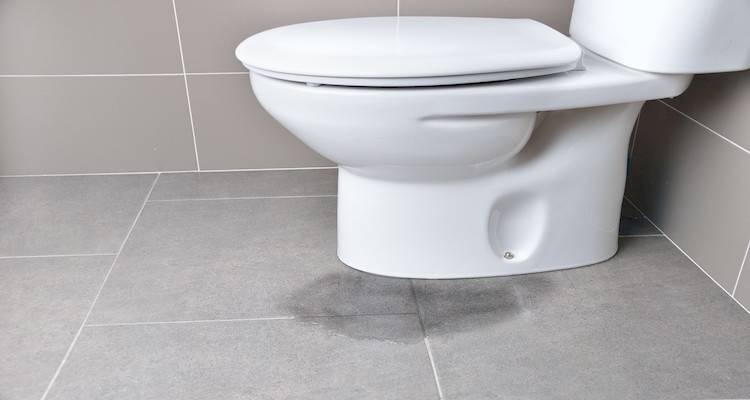
This article will cover all the important things you need to know when your toilet has broken, such as labour and supply costs to help fix your toilet.
The guide will also answer questions, such as how long will it take to fix it? Can you DIY and install a toilet? What are the advantages and disadvantages of all the different types of toilet repairs?
What different designs of toilets are available? What to look out for when hiring a tradesperson to come out and fix your toilet? Where do you find a toilet repair kit?
All the basic information you need to know when buying a new toilet or asking for help to fix it will be found in this article for you.
Table of Contents
What is Toilet Repair?
There are multiple types of toilet repairs when your toilet isn't working properly. As toilets come in two parts, there could be a few things that the problem could be.
If your toilet is not flushing, it could be an issue with the toilet flush valve, which allows water to rush into the bowl during the flush.
The fill valve may also be the issue, which allows water to refill the tank after the flush. One of these valves is frequently faulty when a toilet runs continuously or intermittently, this is the most popular toilet repair as it is very common.
Toilet repairs are usually very simple, and because a non-working toilet is usually an urgent problem, many homeowners DIY the job.
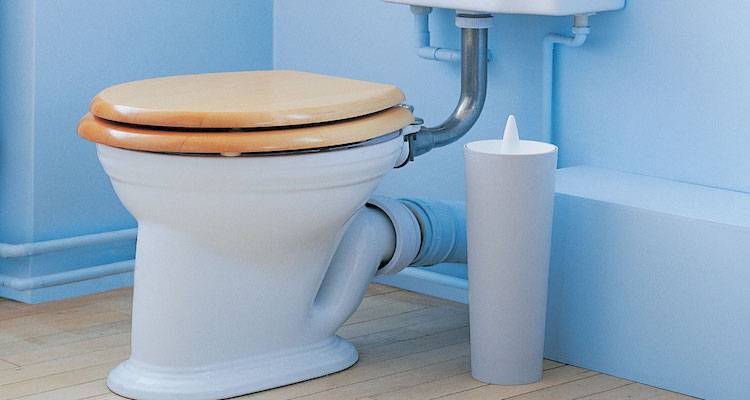
However, when you call a plumber for a toilet repair, you're usually getting a high-priced emergency visit, which is not ideal you are on a budget. If the toilet isn't working, it can also involve a very long wait.
Troubles with your toilet can be frustrating and inconvenient. Problems tend to range from constantly running cisterns to handles that are too loose and won't flush.
Most of the time, some common remedies must be completed. They can be promptly and simply diagnosed and corrected using products or a tradesperson. Typically, toilet repair issues fall into one of three categories:
- Problems with flushing
- Refilling
- Issues that arise when your toilet is not in use
Therefore, most toilet issues are easy to fix, and it is important to repair them quickly, as the longer the damage is left unfixed, the worse it could get.
Types of Toilet Repairs
If your toilet is made up of two different parts, the toilet pan and cistern, a few repairs may be required. Choosing a toilet becomes even more important when you consider that some types of toilets can last you up to half a century.
This is a very long time, so finding the right one is an important choice because you don't want to buy a new toilet every other year.
There are several different types of toilets to consider before making your final decision, depending on the circumstances of your home and your preferences. The procedure has the potential to become overpowering. Here are the most popular toilets.
Dual Flush Toilets
There are two flush button options on these toilets: a half flush and a full flush. We use the half flush for liquid trash and the full flush for solid waste.
Water efficiency is one of the most significant advantages of a dual-flush toilet. Although they are more expensive, they are better for the environment, and your wallet as your water bill will decrease.
Many countries have adapted to this sort of toilet to help the environment to deal with water shortages.
Pressure Assisted Toilets
The forceful flush is the biggest advantage of a pressure-assist toilet as it has a more effective flush. The toilet uses pressurised air to force water from the tank into the bowl.
Pressure-assisted toilets are ideal for households with a large number of individuals who use the toilet regularly. However, there is one disadvantage to consider about the toilets; they are noisy.
Gravity-Flush Toilets
Gravity-flush toilets are widely utilised in private residences around the world. When you click the flush button, water from the toilet tank falls into the bowl. The rubbish is eventually pushed through the trap channel by the water.
Gravity-flush toilets are quiet, contain fewer parts, and require little maintenance over time. When using one of these toilets, you are less likely to deal with a clogged toilet as they last a lot longer than a basic toilet.
Double Cyclone Toilets
Toilets with two cyclone flushes are a relatively recent alternative on sale. They use less water per flush while providing the same flushing force. They are still considered eco-friendly, despite not being as water-efficient as dual-flush toilets. Purchasing one has a significant impact on your monthly water bills as less water is used.
Composting Toilets
Composting is a biological process that treats human waste, which is how this sort of toilet acquired its name. After each use, most of these toilets use bulking materials like sawdust, wood chip, coconut coir, or peat moss.
Therefore, when human waste is composted properly, the result is safe and easy to handle, with no unpleasant smell and no liquids left behind.
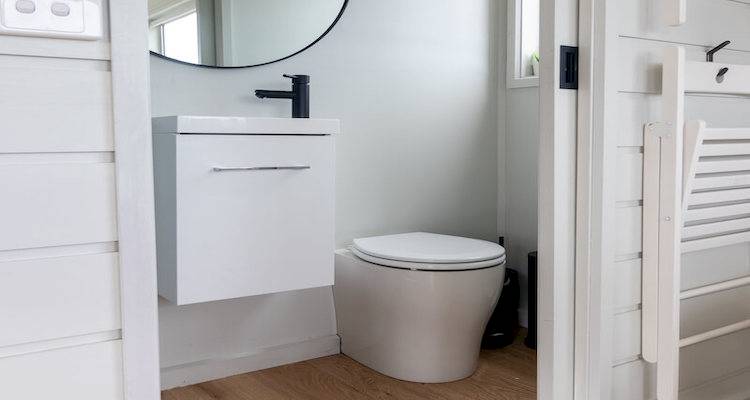
The compost is effective on plants, decreasing the demand for commercial fertilisers while also conserving water quality in the area. Composting toilets, when properly installed and maintained, may be a stylish addition to any modern bathroom.
How Much Does It Cost to Repair a Toilet?
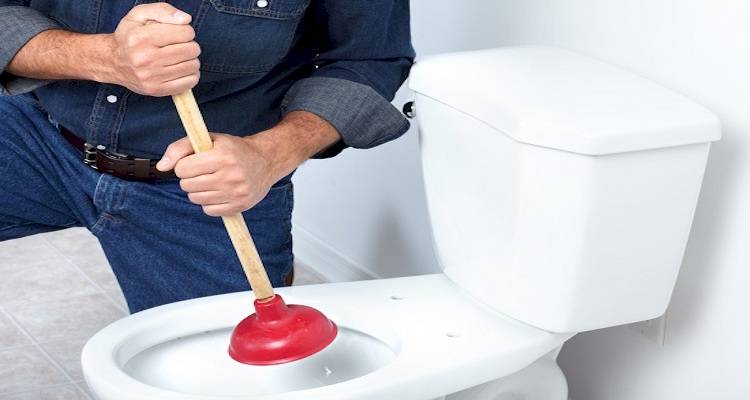
While toilet repair may sound simple, if you don't know what you're doing, you could risk causing more problems and costing yourself more money, such as creating a leak. This could end up causing greater damage to your home and costing you a lot more money in the long run.
A qualified toilet repair specialist will be able to accurately find the issue with your toilet and properly resolve it with a toilet repair quote.
With MyJobQuote, you can receive multiple quotes from plumbers near you, that are fast, free, with no-obligation to go ahead.
As the toilet is the most used plumbing fixture in your home, it should come as no surprise that it will break or develop a problem at some point throughout its lifetime.
The cost of your toilet repair will depend on the type of repair, the time it takes to fix the problem, and where you are located.
How to Fix a Toilet
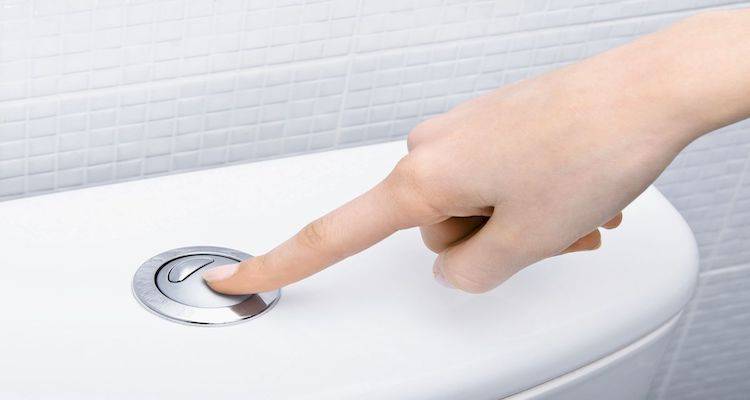
How to Repair an Overflowing Bowl
- Use a Toilet Plunger — The best repair for this is to plunge the clog. The bowl of a blocked toilet will overflow onto the bathroom floor, but the clog is easy to remove, and you probably already have a toilet plunger on hand.
- Create a Tight Seal — Simply lay the plunger into the bowl while it is still full of water, pressing the plunger firmly against the bowl's bottom opening to create a seal. Then, using a rhythmic push-and-pull pumping motion, produce pressure in the drain to unclog it.
- Pump Carefully and Check — If you plunge too hard, dirty water will spill all over the bathroom. So, lift the plunger away from the bowl's bottom after eight to ten pumps. The water should drain if you've cleared the clog.
- Cheapest Method — This is one of the cheapest methods to fix your clogged toilet, as you will find a plunger in most stores near you for a cheap price.
How to Repair a Flush Valve
- Find the Flush Valve — The flush valve is the second important part of the toilet. The flush valve is a plastic or brass fitting connecting to the tank's bottom opening. It is in the centre of the tank.
- Flapper and Float Operation — It uses a rubber or neoprene flapper or a float ball to operate. The float ball is positioned against the valve opening and retains water in the tank until the flush handle is operated.
- Handle and Chain Action — When the handle is depressed, the flapper is lifted away from the valve seat by a chain or lift wire which is linked to the handle rod, allowing water to flush out of the tank and into the toilet bowl.
- Flapper Reseals the Valve — When the tank is full, the flapper returns to its original position in the valve seat, sealing the hole and allowing water to refill the tank.
- Overflow Tube and Replacement — A vertical overflow tube is integrated into the flush valve and extends up into the tank from the base of the flush valve. The overflow tube has two purposes: it prevents the tank from overflowing and allows a small amount of water to flow down into the toilet bowl while the tank is being refilled.
How to Adjust the Water Level
- Overflow Tube — The overflow tube in your toilet prevents the tank from overfilling and flooding your bathroom. However, if the float on the fill valve is set too high, little volumes of water leak into the overflow tube and the bowl, causing the fill valve to switch on automatically and top up the tank regularly.
- Reduce Float Setting — If this is happening to your toilet, you must reduce the fill valve's float setting. Some valves include a metal rod with a little clip that you push to move the clip (and float) up and down on the rod; reduce the water level by moving the clip down.
- Adjust Antique Fill Valve — If you have an antique fill valve with a long rod and a tank ball, bend the rod in the middle to allow the ball to go a little further into the tank.
- Check Water Level Height — Check the water level after flushing the toilet and allowing it to refill and stop on its own. It should be about a half-inch to one inch below the overflow tube's top.
- Final Float Adjustments — If required, adjust the float further and flush until the refill stops at the right level.
How to Fix a Loose Flush Handle
- Tank Interior Components — Although not all tank interiors are identical, they all have a thin metal or plastic rod and a rubber stopper at the bottom that is connected to the lift arm by a chain.
- Check Flapper and Chain — If the flapper does not raise, let water drain from the tank if the chain is unhooked from the lift arm, stopping the flush. If the nut that secures the handle to the lift arm (just inside the tank) becomes loose, an identical problem can occur.
- Turn Off Water — Turn off the water supply to the tank, which is situated on the little hose behind the commode.
- Drain Tank — Remove the cover from the tank. Pull the chain that is connected to the flapper upward. The flapper will be lifted, allowing the water in the tank to drain.
- Tighten Nut — If the problem isn't a broken or loose chain, the nut that secures the handle could have just loosened and worked its way down the lift bar. Using your fingers, twist the nut to the back of the handle until it's secure, and then turn on the water supply to refill the tank.
How to Fix a Leaking Toilet Base
- Check Wax Ring — Squirt some food colouring into the toilet bowl and flush it to see if the wax ring has gone bad. You'll need to replace the wax ring if coloured water starts to leak from the base.
- Standard Wax Ring Parts — Wax rings are common toilet flanges that come in one size fits all and are readily available at hardware or plumbing supply shops.
- Lifting the Toilet — While replacing the ring is a very simple DIY undertaking, it does necessitate physically lifting the toilet, which can weigh anywhere from 70lbs to 125lbs depending on size and style. Such toilet repairs will need someone with a strong back or, better yet, assistance.
- Often Best To Call Plumber — Therefore, this problem is probably best fixed by calling a plumber as it does include risks of hurting yourself due to carrying heavy objects. It also comes with many steps, including nuts and bolts, to place the toilet back to where it was.
How to Repair an Incomplete Flush
- Check Chain and Valve — The chain may be too loose, or the fill valve may be allowing insufficient water into the tank if the toilet starts to flush but then stops.
- Flush and Shorten Chain — Flush the toilet after removing the tank cover. Remove some of the slack from the chain by hooking it one or two links higher on the lift bar if the flapper slides back into place before the flush is finished.
- Watch Tank Water Level — Keep an eye on the tank as it refills with water. When the container is filled, measure how high the water level is about the top of the overflow tube. If the water level in the tank is less than one-half inch below the top of the overflow valve, there's not enough water in the tank to flush the toilet entirely, so adjust the fill valve to raise the water level, which will supply more water for each flush.
- Locate the Fill Valve — Directly above where the water supply tube attaches beneath the tank, locate the fill valve. Your tank's fill valve may feature a huge float on the end of a bar that rises as the water level rises or an air-filled case that fits directly on the fill valve post and rises as the water level rises.
- Find Adjustment Screw — On the side towards the top, look for the fill valve adjustment screw. You may alter the level of water in the tank by rotating the screw slightly one way or the other using a screwdriver.
Some small toilet repairs can be done through DIY. However, if it is too complicated or you don't have much experience, to avoid any extra damage, you should hire a professional.
Most homeowners choose to hire a plumber to fix their toilet. With MyJobQuote, you can request multiple quotes from plumbers near you, that are fast, free, with no-obligation to go ahead.
How Long Does It Take to Repair a Toilet?
When replacing a toilet, knowing what is wrong with it is an important factor as the cost and timescale to fix it depends on the problem.
The length of time you spend repairing a toilet is determined by the damage. For example, you could be repairing a flooring or toilet flange that has been damaged by an old or leaking toilet. In this situation, repairs could make the job take much longer. In addition, you probably need a plumber for repairing damage, which may increase the duration of the job.
Leaks at the Toilet Base
Most DIYers are more than capable of doing this task, which takes no more than two hours in most circumstances. However, it's critical to use caution when moving the toilet, as the porcelain of the toilet tank is easily cracked.
However, with this damage to a toilet, it is more than likely that you won't be allowed to use your toilet until it is fixed. This is because the water leaking is probably dirty water, so using the toilet could worsen it. It's best to hire a tradesperson to fix it, but this also makes the process longer as waiting for appointments can be difficult.
Incomplete Flush/Slow Flushing Toilet
Although a toilet takes overtime to start to restrict and block water from flushing your toilet, it is a quick and easy process to do so. A tank normally replenishes in three minutes, depending on your water pressure.
If it's taking a long time to fill or isn't filling at all, then something in your toilet isn't working properly. Start with the shut-off - make sure the water shut-off is completely open. Your slow-filling troubles may be caused by the fact that it's not open.
There are multiple videos you can follow to help you with the process of repairing your toilet. The repair barely takes up any of your days as it can be done within five minutes if you follow a step-by-step guide on what to do.
Loose Flush Handle
Replacing a toilet handle is a straightforward task that even a new DIYer can complete. With a new handle, you may refresh the style of your toilet and bathroom in just a few minutes or replace a broken, wiggle-free toilet handle.
You can search for videos on YouTube that will show you how to repair or replace a new handle in just under five minutes. This repair does not need the help of tradespeople. However, it just takes a few minutes of your time or a new handle.
Adjusting the Water Level
Most clogged toilets are so-called "slow drainers." To put it another way, flush water partially fills the bowl but does not rush out to wipe up the trash. As a result, the water level remains high for a few moments before draining to its normal level. Therefore, sometimes you must adjust the water level to prevent overflowing.
However, adjusting the water level is an easy process. You can alter the water level in your toilet in seconds if you have a fill valve with a cylinder float with help from video's found on the internet.
On the other hand, if you don't have a fill valve with a cylinder float, it may take longer, and sometimes a plumber might have to come in and look, which may make the process of repairing your toilet longer.
Repairing the Flush Valve
You can now buy flush valve repair kits on the internet for £20-£30, which are easy and cheap to use. The design and flushing mechanism of newer toilets varies widely. A flapper, a disc, a plunger, or a Douglas valve can all be used.
It would help if you tried to locate the make, model, and parts list before repairing your toilet. With the process being easy and following videos on YouTube, you can repair your flush valve in under ten minutes! This is an easy process, and you do not need a plumber to do it for you.
Overflowing Toilet
This is a long process as it needs to be done properly to prevent it from coming back even more. However, because this is a straightforward task, you should be able to repair your overflowing toilet in two to three hours.
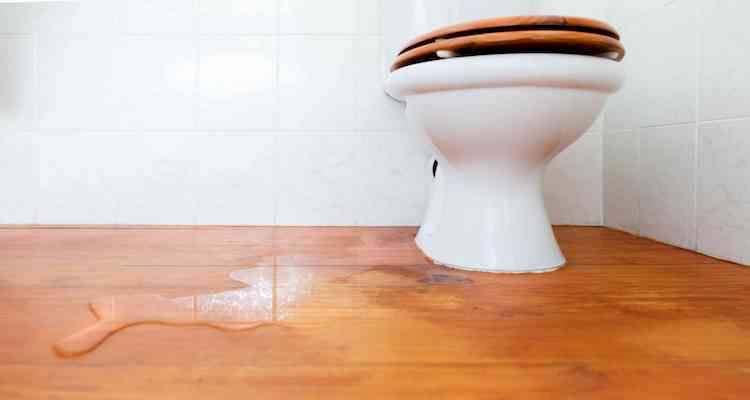
If you don't have much DIY experience, though, you may want to add an hour or two to that period. However, it is suggested that you call a plumber in to do this repair for you, as DIY can sometimes cause more damage and a bigger overflow of dirty water.
| Repair | Timescale |
|---|---|
| Leaks at the Toilet Base | 2-3 hours |
| Incomplete/Slow Flush | 5 minutes |
| Loose Flush Handle | Less than 5 minutes |
| Adjusting Water Level | Seconds – up to an hour |
| Repairing the Flush Valve | Under 10 minutes |
| Overflowing Toilet | 2-3 hours |
Building Regulations & Planning Permission for Toilet Repairs
Building rules clearance is usually not required for domestic like-for-like repair bathrooms, but it may be required if you're changing the existing layout or installing a downstairs toilet.
Building standards must be followed when repairing your toilet. These are in place to ensure that everything related to plumbing, including health and safety, has been examined. If they aren't, you'll have issues not only with the toilet's function but also with selling the house.
Where building control approval is required, your local council will issue you a building control completion certificate, which you will only be eligible for if everything is up to code to show that it is safe to repair/replace the toilet.
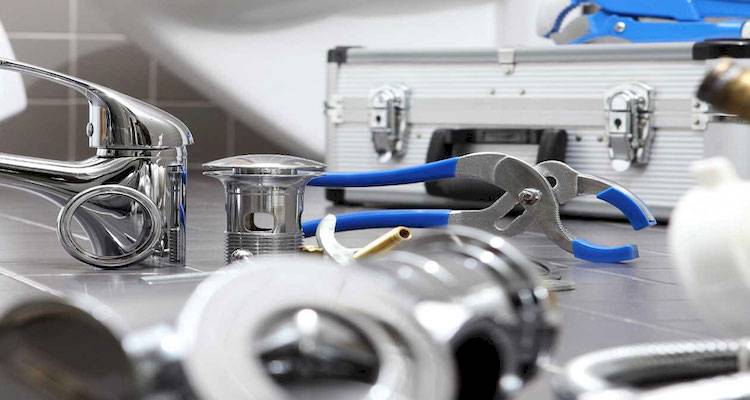
It is often best to have a planning specialist on board who can share what will apply to you; not all residences will be subject to the same regulations, and regulations can change at any time, so having someone on hand who is up to date on the latest restrictions imposed by the council will make your life a lot easier.
Unless the structure is listed, planning clearance is usually not required for repairing toilets. Only where you decide to change the bathroom layout or plumbing are building regulations likely to apply.
Questions to Ask When Hiring a Toilet Repair Specialist
1. Have You Been in Business for a Long Time?
Always inquire how long the toilet repair service has been in operation. If they can also give you proof, that's even better because you'll realise they're not "fly-by-night" types, which means they have a legitimate firm and address and are professionals.
2. Do They Have Any Previous Employment References?
This is a positive sign if you can discover a toilet specialist prepared to show you examples of their previous work. Take the time to look at their previous work images if they have them.
Also, if they have references, ask for a copy and follow up with a phone call to make sure they were happy with the work. It also reduces the chances of you being scammed as they are showing you their past jobs.
3. Do They Have Liability Insurance?
It's critical that you find out if your builder is covered by insurance for any potential harm to your home. Even if they've never had a problem before, mistakes do happen, so make sure they're covered if anything goes wrong while the work is being done. Therefore, if anything goes wrong, it will not affect your insurance or your home insurance.
4. What Kind of Guarantee Do They Offer for Their Work?
Before signing, make sure you receive a formal guarantee of work or examine their usual guarantee. It's even better if their guarantee is backed by insurance, as you'll be protected if the tradesman goes out of business.
It's critical to review the promises because you don't want to discover an issue a few weeks after your normal guarantee period has expired, and it will cover the costs if the damage comes up again.
5. How Much Will the Job Cost?
Get as many quotations as you can from a range of different toilet specialists, but always make sure it's a written quote and that it's valid for a certain amount of time.
If there's anything on the quotation that you're not sure about, inquire about it and don't ever feel like you're asking a stupid question. Before you sign a contract, get all the details on how much the work will cost.
6. Ask for Their Licence
Obtaining the specifics of a specialist's licence is one of the most basic items to ask before beginning any task. Take note of the licensing information and double-check that it is current and genuine.
You could need them later, and it's likely that if something goes wrong, the specialist won't be ready to give you the details at that point, so obtain them now and keep them secure.
7. How Does the Payment Work?
Before you sign the contract, agree on the payment conditions with your specialist. For example, some tradesmen would want a deposit upfront, while others will gladly complete the task and be paid later.
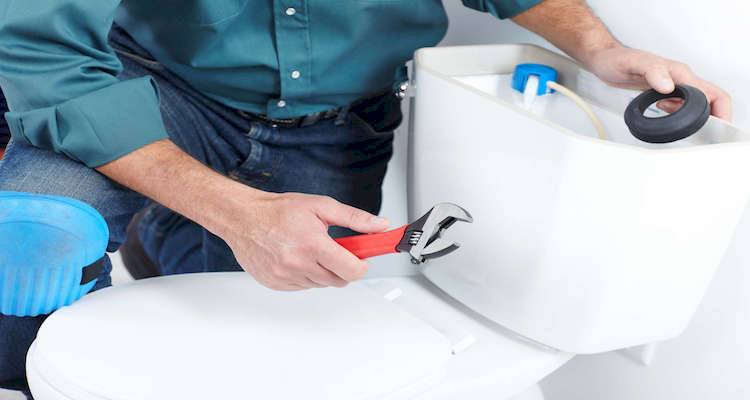
Some will bill you for the work, while others may need payment in cash or by credit card after the job is finished. Arrange it in a style that best suits you and makes you feel at ease, but make sure it's in writing, so you don't get scammed.
FAQs
How Do You Repair a Leaking Toilet?
Then alternately tighten each bolt with a wrench, a little at a time. Don't put too much pressure on the toilet's base; it could crack. The leak should stop if you're lucky. If tightening the bolts doesn't help, the toilet will have to be removed, and the wax gasket replaced.
Can You Fix a Broken Toilet Cistern?
Where Can I Find a Toilet Cistern Repair Guide?
Can You DIY a Damaged Toilet?
How Much Does a Plumber Cost to Fix a Toilet?
What are the Pros and Cons of DIY Plumbing?
After gaining some knowledge and experience, the ability and confidence to undertake emergency repairs, even if it's just a temporary fix until the plumber arrives, is a vital talent. Regardless of whether you complete your DIY plumbing project or not, knowing where your water supply shut-off valve is in advance will come in helpful in case of an emergency.
Plumbing necessitates expertise, time, and tools, all of which you may lack or find difficult to acquire. Consider the expenditures of DIY plumbing, such as the plumbing supplies you'll need to buy.
You must have a thorough understanding of the building codes. Plumbing work performed by an allowed person may be excluded from requiring a building approval, depending on your area.
In the long run, complications and accidents can cost you more. You may also depreciate the resale value of your home, particularly if things go wrong or if your hard work fails to meet safety and building code requirements. In addition, DIY plumbing is linked to several safety risks that could endanger you and your family.


